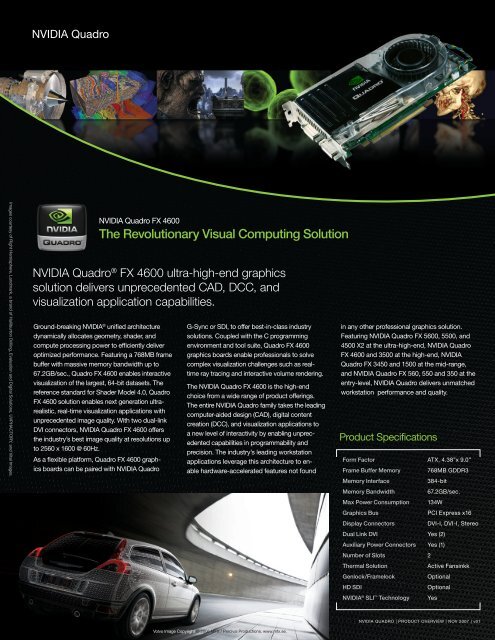


Since NV31 runs at only 325MHz on the GeForce FX 5600, it doesn’t need the GeForce FX 5800 Ultra’s Dustbuster to keep cool.
0.13-micron manufacturing process - Like NV30, NV31 is manufactured using 0.13-micron process technology by the good folks at TSMC. NV30 has more parallelism than NV31, which has more parallelism than NV34, but NVIDIA isn’t quantifying anything beyond that. ATI clearly defines how many pixel and vertex shaders are present in its R3x0 line of graphics chips, but NVIDIA keeps referring to the relative strength of the GeForce FX’s pixel and vertex shaders in terms of the level of “parallelism” in the chip’s programmable shader. Obfuscated shader structure - NVIDIA spells out NV31’s 4×1-pipe architecture quite clearly, but NV31’s shader structure is a closely guarded secret. Unlike NV30, which can apparently lay down either four or eight pixels per clock depending on what kind of pixels are being rendered, NV31 lays down four pixels per clock across the board. Clearly defined pipelines - NVIDIA has shrouded much of NV31’s internal architecture in mystery, but they have revealed that NV31 has four pixel pipelines, each of which has a single texturing unit. Both companies’ compromises sacrifice some precision for performance which is a better choice depends on real-world performance and image quality. ATI, by comparison, splits the difference and offers only 96-bit floating-point precision with the R300-series chips’ pixel shaders, although the rest of the graphics pipeline offers a range of datatypes, including 64-bit and 128-bit floating-point formats. NVIDIA claims developers can be more efficient by defining their variables for the datatypes they need, mixing 64-bit and 128-bit processing as required. Of course, programs using 64-bit datatypes run faster than those with 128-bit datatypes. Like NV30 and NV34, NV31 supports 64- and 128-bit floating-point precision in its pixel shaders. In fact, NVIDIA takes things a few steps further by supporting longer pixel shader program lengths than called for by the pixel shader 2.0 spec. Pixel and vertex shader versions 2.0 - The key selling point of the NV31 graphics chip, and indeed of NVIDIA’s entire GeForce FX line, is support for DirectX 9’s pixel and vertex shader versions 2.0. I’ll just be highlighting NV31’s more important features here, but a more detailed analysis of NV31’s feature set and how it compares with NV30 and NV34 can be found in my preview of the GeForce FX 5600. As its name implies, the Asylum GeForce FX 5600 256MB packs 256MB of memory, but the card also has a few other tricks up its sleeve.īefore we consider BFG Technologies’ implementation of the GeForce FX 5600, it’s worth taking a moment to go over some of the key capabilities of NVIDIA’s NV31 graphics chip. 
Today we’ll be looking at NV31 as implemented in BFG Technologies’ Asylum GeForce FX 5600 256MB card. Like other members of the GeForce FX family, the GeForce FX 5600 is dressed up with enough DirectX 9 goodies to give users a “cinematic” experience, although features alone don’t guarantee performance. Powered by NVIDIA’s NV31 graphics chip, the GeForce FX 5600 is a mid-range graphics card aimed at ATI’s Radeon 95 lines. For enthusiasts, however, the GeForce FX 5600 may be the most interesting card in the GeForce FX line. The GeForce FX 5800 Ultra is a noisy alternative to ATI’s Radeon 9800 Pro, and the GeForce FX 5200 is a slower performer in real-world games and applications than the Radeon 9000 Pro. The registercombiners then are the part where you calculate with the sampled colors to do the final result.T HUS FAR, the performance of NVIDIA’s GeForce FX line has left something to be desired.

but at least texshaders you should understand easy… its basically the same as the texture-fetching part at the beginning of each pixelshader (with the embm there in, or simple sampling (tex t0 i think). Registercombiners and texture shaders are no easy task. i’m just sorry i don’t know anymore the name of the files (and as i have about 400 developer documents down, well… you get the idea )īut i thought at least one of them is in the nvsdk… once you know that, you get the idea how they work compared to pixelshaders. those presentations explain colorful and with sweet pics how they are designed.
#Pixel shader for nvidia quadro k600 how to#
how to get the interfaces (means the extensions) is your own job, but the nvidia files should help there (nvsdk for example) or else, well, its just grabbing functionpointers, so what?įor understanding how register combiners or texture shaders WORK, go for.







 0 kommentar(er)
0 kommentar(er)
